|
|
Also see Nest ID Matrix (contents) and Egg ID Matrix (color, spots, etc.)
To see other cavity nester bios/photos:
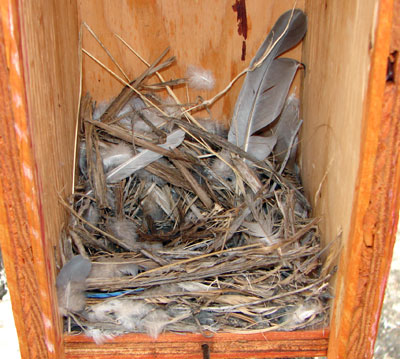 Violet-green Swallow (VGSW) nest. Photo by Zell Lundberg of Coaldale, CO. Pretty typical construction for this area. Most seem to be shallow and scratchy looking, adorned by glorious feathers (down and Band-tailed Pigeon.) This one has a Steller Jay’s feather in left front, more gray feathers, and Band-tailed Pigeon feathers in the back. Includes some strips of juniper bark which are common in all nests in this area of Coaldale, CO. Violet-green Swallow (VGSW) nest. Photo by Zell Lundberg of Coaldale, CO. Pretty typical construction for this area. Most seem to be shallow and scratchy looking, adorned by glorious feathers (down and Band-tailed Pigeon.) This one has a Steller Jay’s feather in left front, more gray feathers, and Band-tailed Pigeon feathers in the back. Includes some strips of juniper bark which are common in all nests in this area of Coaldale, CO.
Much sloppier than Tree Swallow nests I see in CT. Nest description: Shallow, loosely constructed, sloppy nest made of straws, dry grasses, strips of bark rootlets, pine needles, lined with abundance of feathers (white preferred?). Occasionally fur or horsehair? Sometimes wood chips, plant down, fiberglass insulation, string, rope and paper. Cupped middle? |
||
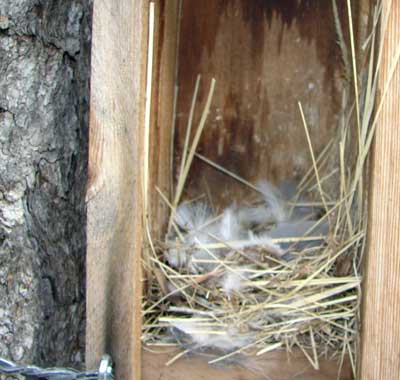 Photo by Zell Lundberg. Lots of down in this one. VGSW egg below, compared to a penny. Photo by Zell Lundberg. Lots of down in this one. VGSW egg below, compared to a penny.
Egg description: 4-6 (rarely 7) subelliptical to oval white eggs, no markings, smooth to non-glossy to slightly glossy. (Indistinguishable from Tree Swallow.) |
||
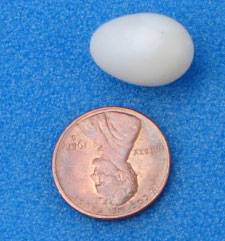 |
||
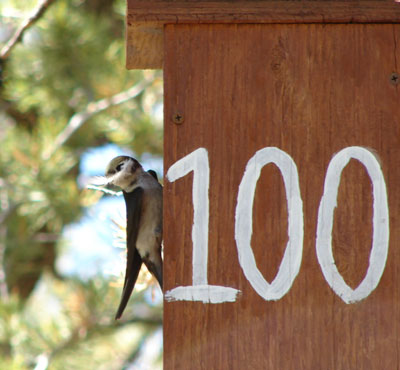 A feathery smile on an adult VGSW. Photo by Zell Lundberg. Reminds me of the Mary Poppins song (A Spoonful of Sugar): “A robin feathering his nest A feathery smile on an adult VGSW. Photo by Zell Lundberg. Reminds me of the Mary Poppins song (A Spoonful of Sugar): “A robin feathering his nesthas very little time to rest while gathering his bits of twine and twig.” And this one actually DID use a twig! |
||
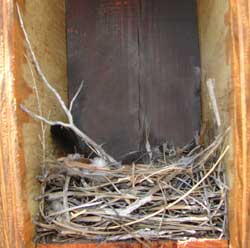 |
||
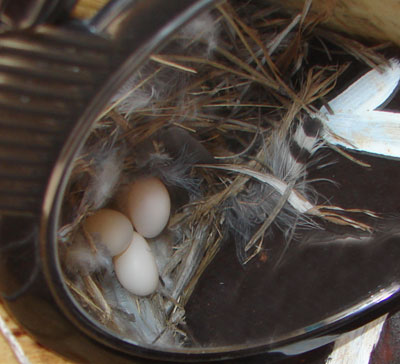 VGSW eggs. Photo by Zell Lundberg. VGSW eggs. Photo by Zell Lundberg. 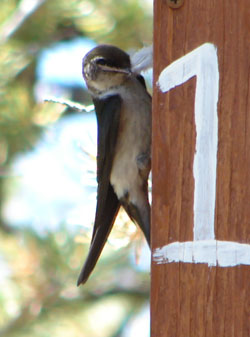 |
||
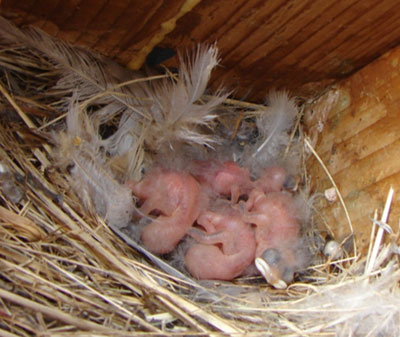 One day old nestlings on left. Altricial hatchlings with slight wisps of creamy or grayish down on back, crown and scapulars, pale pink skin, creamy-whitish gape. 6 day old nestlings below. Note “clown lips.” Photos by Zell Lundberg. One day old nestlings on left. Altricial hatchlings with slight wisps of creamy or grayish down on back, crown and scapulars, pale pink skin, creamy-whitish gape. 6 day old nestlings below. Note “clown lips.” Photos by Zell Lundberg. |
||
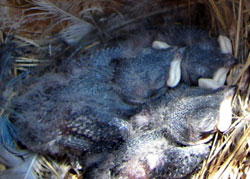 |
||
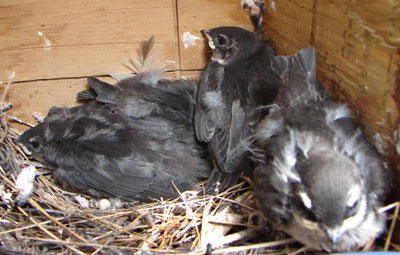 Nestlings on Day 17. Note fecal material on walls and corner (parents stop removing fecal sacs around day 9-10.) Photo by Zell Lundberg. Nestlings on Day 17. Note fecal material on walls and corner (parents stop removing fecal sacs around day 9-10.) Photo by Zell Lundberg. |
||
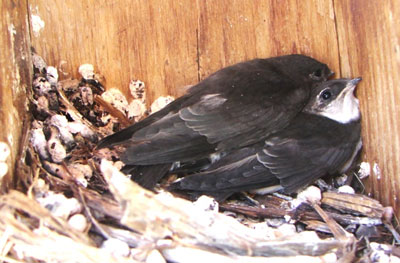 Day 22, very close to fledging. Wings and tail are at full length. Note fecal material concentrated in one corner of the box. Day 22, very close to fledging. Wings and tail are at full length. Note fecal material concentrated in one corner of the box. |
||
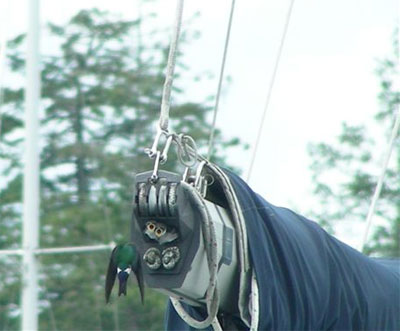 Nest in a sailboat boom. Photo provided by Malcolm Rodin. They may also nest in an abandoned woodpecker cavity, rock or cliff crevices, holes in columnar cacti, and holes in dirt banks, including old nests of Cliff or Bank Swallows. Nest in a sailboat boom. Photo provided by Malcolm Rodin. They may also nest in an abandoned woodpecker cavity, rock or cliff crevices, holes in columnar cacti, and holes in dirt banks, including old nests of Cliff or Bank Swallows. |
||
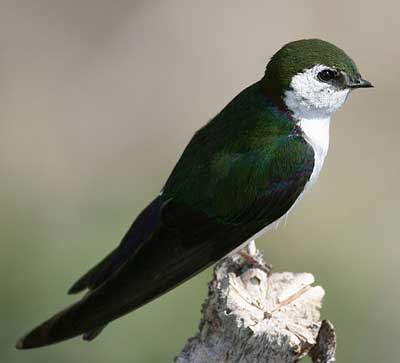 Male Adult Violet-green Swallow. Photo by Wolfgang Wander, Wikimedia Commons. Male Adult Violet-green Swallow. Photo by Wolfgang Wander, Wikimedia Commons. |
More Information and Links:
- Sipapu Blog on VGSW (Tina Mitchell)
- Mac’s page on VGSW
- All About Violet-green Swallows, Sialis.org
- James Reserve bluebird trail (San Jacinto)
The student of Nature wonders the more and is astonished the less, the more conversant he becomes with her operations; but of all the perennial miracles she offers to his inspection, perhaps the most worthy of admiration is the development of a plant or of an animal from its embryo.
-Thomas Henry Huxley, British biologist and educator. Reflection #54, Aphorisms and Reflections, selected by Henrietta A. Huxley, Macmillan, 1907.
